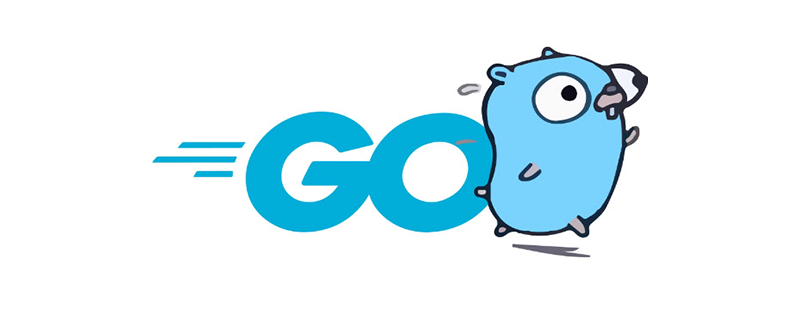
Go language is not machine language; machine language is a low-level language, and go language is a high-level language. Go language is a high-level programming language open sourced by Google in 2009. It is designed to solve practical problems in the development process of large-scale systems. It supports concurrency, unified specifications, simplicity, elegance, and powerful performance; its main goal is to "have both The development speed of dynamic languages such as Python and the performance and security of compiled languages such as C/C.”

The operating environment of this tutorial: Windows 7 system, GO version 1.18, Dell G3 computer.
Go language is not machine language; machine language is a low-level language, and go language is a high-level language.
What is machine language, assembly language and high-level language
Machine language is a language expressed in binary code. It is the only language that a computer can directly recognize and execute. It has the advantages of being directly executable by a computer, concise, and fast in operation. However, it is not intuitive and is very error-prone. Program inspection and debugging They are all relatively difficult, and they are also very dependent on machines.
Assembly language is to solve the shortcomings of machine language that is difficult to understand and remember. It uses names and symbols that are easy to understand and remember to represent the operation codes in machine instructions. This A language composed of instruction mnemonics is called assembly language. The machine cannot directly execute programs written in assembly language, it also depends on the machine.
High-level language provides users with a way of working that is close to natural language, can use mathematical expressions, and is relatively independent of machines. Like assembly language, machines cannot directly execute programs written in high-level languages.
High-level language is mainly relative to assembly language. It is programming that is closer to natural language and mathematical formulas. It is basically separated from the hardware system of the machine and uses a way that is easier for people to understand. Programming. The program written is called the source program.
High-level language does not refer to a specific language, but includes many programming languages, such as the popular go language, java, c, c, C#, pascal, python, lisp, prolog, FoxPro , Easy Language, Chinese version of C language, etc. The syntax and command format of these languages are different.
go language is a high-level language
Go language is a high-level programming language open sourced by Google in 2009 , it is designed to solve practical problems in the development process of large-scale systems. It supports concurrency, unified specifications, simplicity, elegance, and powerful performance. It is praised by many Go language evangelists as "C language in the cloud computing era." The main goal of the Go language is to "have both the development speed of dynamic languages such as Python and the performance and security of compiled languages such as C/C."

#The Go language is sometimes described as a "C-like language", or "the C language of the 21st century". Go inherits similar expression syntax, control flow structure, basic data types, call parameter value transfer, pointers and many other ideas from C language. It also has the running efficiency of compiled machine code that C language has always valued and is consistent with existing Seamless adaptation to the operating system.
Programmer’s Voice: I can prototype, test, and deploy a production system in a matter of days if the real world requires it, and It can handle 5 times more requests per second than the original, and the CPU and memory overhead are still very small. I think only the Go language can do it.
Go language has the following advantages:
Go language has the following shortcomings:
#Expand knowledge: the difference between machine language, assembly language and high-level language
1. Efficiency:
Machine language: high execution efficiency and fast speed;
Assembly language: low-level programming efficiency;
High-level language: The execution efficiency is not as good as machine language, but the programming efficiency is higher than assembly language.
2. Composition:
Machine language: Machine language is an instruction set composed of 0 and 1 arranged according to certain rules: it is the only one that a computer can recognize and execute. language.
Assembly language: An instruction system that uses mnemonics to represent opcodes and operands in machine instructions. Enhanced readability and fast execution speed;
High-level language: a language that is closer to human natural language and mathematical language. Programs written in it can greatly reduce the labor of programmers, so it also has Better portability.
3. Oriented type:
Machine language: It is a machine-oriented language with poor readability.
Assembly language: It is still a machine-oriented language with strong readability;
High-level language: Simplified natural language that is close to humans and has high readability.
For more programming related knowledge, please visit: Programming Video! !
The above is the detailed content of Is go language a machine language?. For more information, please follow other related articles on the PHP Chinese website!
 Usage of Type keyword in Go
Usage of Type keyword in Go
 How to implement linked list in go
How to implement linked list in go
 What are the Go language programming software?
What are the Go language programming software?
 How to learn go language from 0 basics
How to learn go language from 0 basics
 How to define variables in golang
How to define variables in golang
 What are the methods to implement operator overloading in Go language?
What are the methods to implement operator overloading in Go language?
 What are the operators in Go language?
What are the operators in Go language?
 What are the data conversion methods in golang?
What are the data conversion methods in golang?